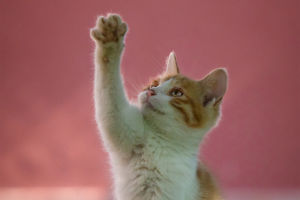Owls can be found on every continent except Antarctica. The vast majority of owls are nocturnal animals, sleeping during the day and foraging at night, and it is generally difficult to see them. There are more than 130 species of owls in the world.
Morphological characteristics.
The feathers around the owl's eyes are radial, and the fine feathers are arranged in a face plate, which is shaped like a cat, hence the name owl. Its feathers are mostly brown, scattered with tiny spots, densely packed, and fly silently.
Female owls are usually larger than males. The head is large and wide, the mouth is short, the sides are flat and strong, the apex is hooked and curved, the mouth base is free of wax film, and is mostly covered by bristles.
Like many carnivores, owls have their eyes directly in front of their faces, which gives them excellent depth perception during hunting, especially in dimly lit environments.
But different species of owls vary widely in size. The smaller ones are only slightly larger than magpies even when they are adults, while the larger ones can be as high as nearly 1 meter, which is also worthy of the title of "eagle".
Habits of owls.
1. Habitat.
Most owls perch in trees, some species inhabit rocks and grass.
2. Living habits.
The vast majority of owls are nocturnal animals, and they are nocturnal, and they are not easy to be seen when they hide in the woods or under the eaves of trees during the day.
3. Food.
Mainly rodents, but also eat insects, birds, lizards, fish, and other animals. Food is often swallowed whole, and the indigestible bones, feathers, hair, chitin, and other residues in the food are aggregated into small groups, which are spit out through the esophagus and mouth, called food pills.
4. Color blindness.
Owls are colorblind and the only birds that cannot distinguish colors.
5. Predation.
Once the owl has located its prey, it will strike quickly. It can continuously adjust the direction of the attack according to the noise generated by the movement of the prey and finally succeed in preying.
Introduce several different species of owls.
1. Ghost Owl.
Because its call is changeable, just like a flute, it repeats every few seconds and keeps changing, so it gives people a gloomy feeling, hence the name.
2. Black Owl.
The black owl is a large owl, with a body length of 56-65 cm, a large head, no ear hair clusters, and a prominent face plate, which is round and light gray.
3. Monkey-faced owl.
The monkey-faced owl has a flat, heart-shaped face, white or gray-brown, surrounded by dark chestnut edges and corners, like a monkey face, covered with downy hair, a pair of deep round eyes, a tawny beak, without a sharp tip, and eagle claws.
When the owl comes out at night, the owl has absolute "air superiority" and has almost no natural enemies.


